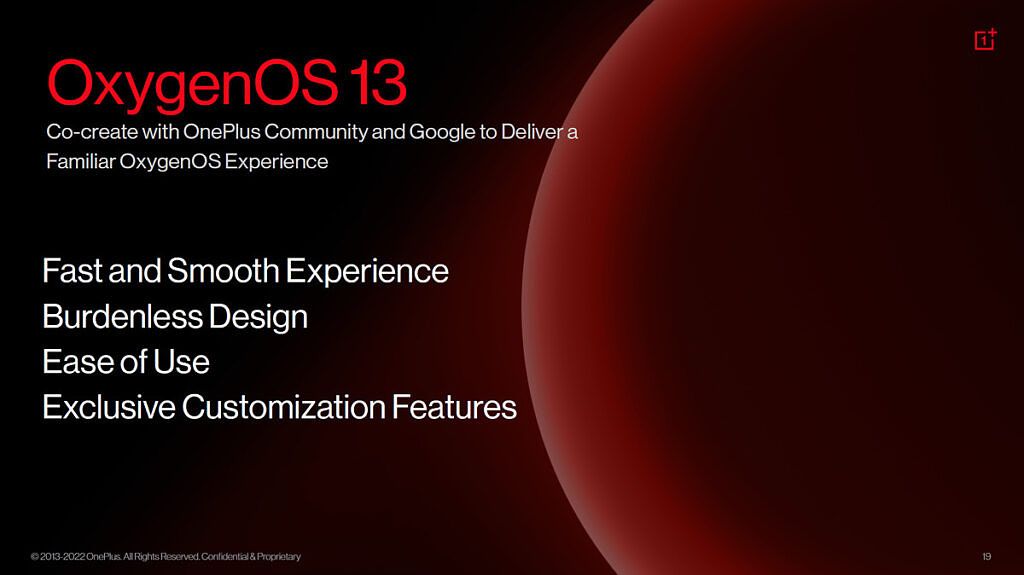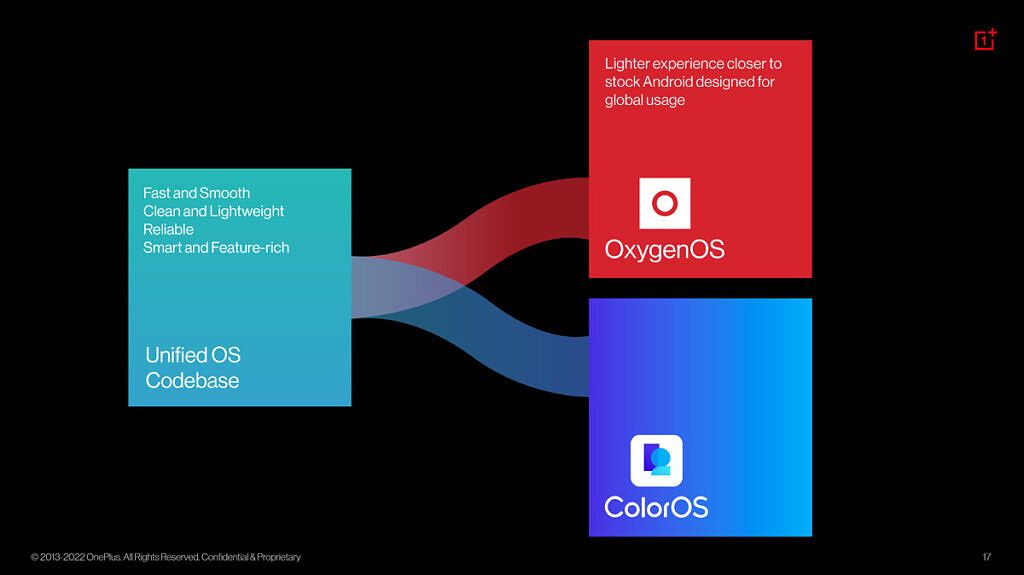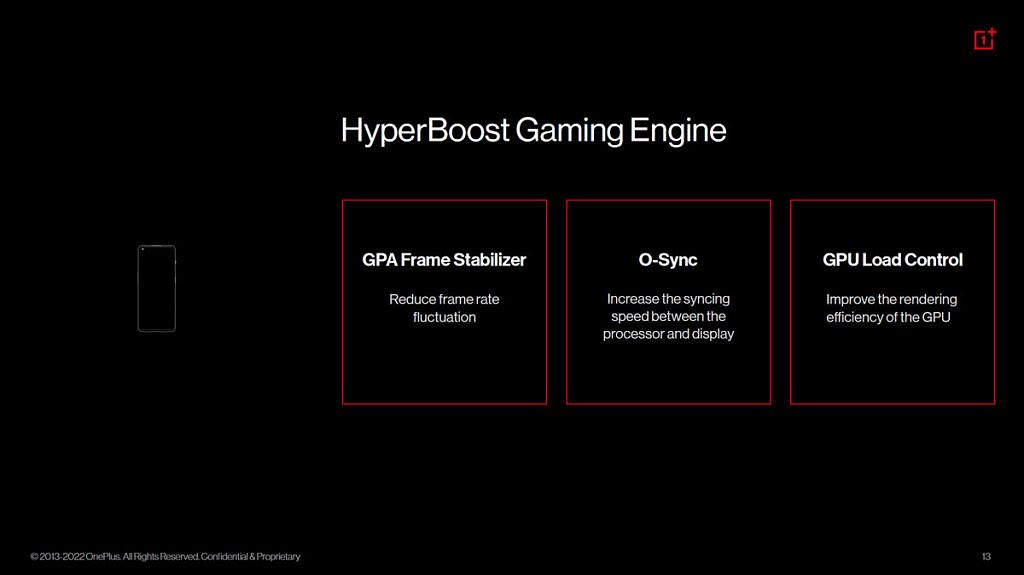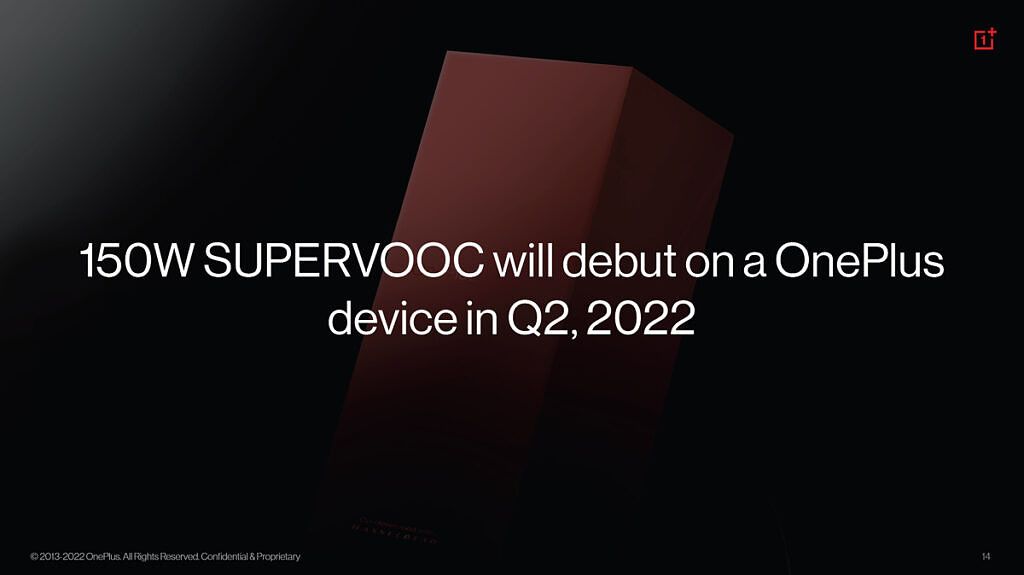Update 1 (03/01/2022 @ 06:00 ET): OnePlus has provided a statement on the differing philosophies of OxygenOS and ColorOS. Scroll to the bottom for more information. The article as published on February 28, 2022, is preserved below.
Right on the heels of MWC 2022, OnePlus has a few updates to share on its business. These relate to the wider global launch of the OnePlus 10 Pro, its new plans for OxygenOS, its new retail model pilot in India, and the expansion of its product focus.
OxygenOS 13
The biggest announcement from OnePlus comes in the form of its plans for OxygenOS 13. Yes, OnePlus is indeed working on OxygenOS 13, as we spotted earlier in the month.
This marks a departure from the plans that OnePlus had shared last year for its "unified OS" with OPPO. As it stands right now, OxygenOS and ColorOS share the same codebase. The original plan from 2021 was to move a step beyond this integrated codebase and combine the “fast and burdenless experience of OxygenOS with the stability and rich features of ColorOS”. But plans have changed in 2022, and OnePlus wants to keep OxygenOS around and separate from ColorOS based on the feedback from its community. There is no longer going to be a "unified OS", and both OxygenOS and ColorOS will continue to exist.
To that end, OnePlus mentions that it is working on OxygenOS 13 for its devices. It will feature all the hallmarks of OxygenOS, like a fast and smooth experience, burdenless design, ease of use, alongside a range of exclusive customization features. While not specifically mentioned, we can extrapolate that OxygenOS 13 will be based on Android 13 too.
Beyond OnePlus' announcement, there are a few things to think about. OxygenOS, in its current form right now, is comparable to an experience skin over ColorOS. That's not a bad thing per se (since we do believe that ColorOS has its own positives), but that begs the question: what exactly is changing between the two announcements, other than a decision to keep the name around? We know that devices like the OPPO Reno 6 5G, the OPPO Reno 7 5G (Global), the OPPO Reno 7 SE 5G (China), and the OnePlus Nord CE 2 5G share the same firmware (and if you didn't know that, well, now you do). There has also been feature migration across the two OS, like the Canvas AOD feature moving from OOS to COS, the Hasselblad camera app from OOS moving to COS on the OPPO Find X5 Pro, while the other OxygenOS 12 devices get the ColorOS camera app, OOS 12's Private Safe being a COS feature, and so on. OxygenOS is ColorOS, so even if both brandings remain separate, they are still unified.
Perhaps the direction of their feature and UX development may be different? We can only speculate at this stage, as OnePlus/OPPO have not mentioned anything in this regard. We have asked OnePlus what would the points of difference be between OxygenOS and ColorOS in a world where they still have a unified codebase but do not have a unified OS, but have not received a response yet. [Update: Statement added at the bottom]
OnePlus 10 Pro wider launch outside of China
The second most important announcement from OnePlus is that the OnePlus 10 Pro will finally launch outside of China in March 2022. The device will launch in North America, India, and Europe by the end of March. OnePlus also confirmed that the device will come with OxygenOS 12.1 in the global market -- the flagship launched with ColorOS in China, but that has been the case for a while now.
If you are wondering why the three-month lag between a China release and a global release, OnePlus mentions the fierce competition in the Chinese market and its relative lack of investment within it had allowed competitors to take advantage of the situation. Many OEMs launch their flagships in December-January in China. For a simultaneous global release, OnePlus needs to have global software builds ready and certified, which is a rather drawn-out process. So it is quicker to have a Chinese release and then follow it up with a global release later on, which is what many other OEMs do. The company will be assessing how it can shorten the time window between such launch delays in the future.
HyperBoost Gaming Engine and 150W SuperVOOC
OnePlus is working on a series of gaming-focused features under the HyperBoost Gaming Engine banner, and these will be available on the OnePlus 10 Pro after its global launch. These features include GPA Frame Stabilizer, O-Sync, and GPU Load Control (GLC).
OnePlus will also be debuting OPPO's 150W SuperVOOC fast charging technology later in the year.
Increasing global footprint with a larger lineup
OnePlus has India, the US, Europe, and China as its key markets, but for this year, it will parallelly explore new markets too. The company will expand its product lineup in Mexico and Canada this year, giving customers more options to choose from. More new markets are planned for South America, Asia, North Africa, and the Middle East.
OnePlus will also be releasing more 5G smartphones across a wider price spectrum, including a launch for its most affordable 5G smartphone in India and Europe yet. OnePlus will also expand to new IoT categories and release more IoT products.
Debuting new retail model in India
OnePlus will be debuting a new retail model in India soon. Customers in the region will be able to order a product online and then immediately pick up the product from a retail store nearby. This will allow users to enjoy services offered by offline channels, such as guided setups, while still offering the convenience of ordering online.
Update: OnePlus provides a statement
We had asked OnePlus what would the points of difference be between OxygenOS and ColorOS in a world where they still have a unified codebase but do not have a unified OS, but had not received a response by the time of publishing. OnePlus has now provided the following statement:
OxygenOS and ColorOS will continue to be developed on the same codebase – to allow for faster updates and better build quality. However, OxygenOS and ColorOS will remain independent brand properties, in part because our software philosophies for OxygenOS and ColorOS differ. OxygenOS is designed to offer users a lighter experience that is closer to stock Android and oriented towards usage globally.
With OxygenOS 13, we want to deliver an experience that long-time OnePlus users will be familiar with while ensuring it upholds hallmarks of OxygenOS, like a fast and smooth experience, burdenless design, and ease of use. OxygenOS 13 will retain its unique visual design and a range of exclusive customization features.
It will be interesting to see how both the software UX skins evolve considering they branch from the same codebase.
What are your thoughts about OnePlus' proposed plans for 2022? Let us know in the comments below!







